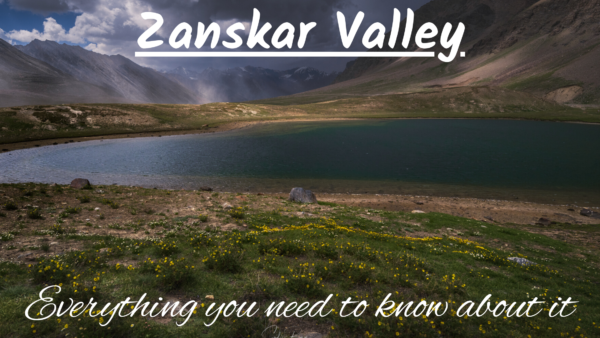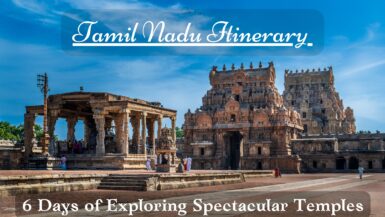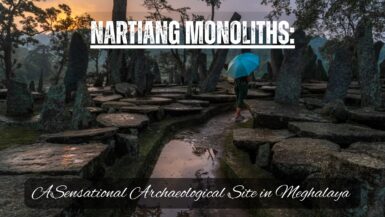Remember the cliché fairy tale phrase of “land far, far away”? Zanskar Valley, believed to be one of the remotest places in India, fittingly fits into this fabled adage. The faraway land of Zanskar is surrounded by the mighty Himalayas and crisscrossed by the feisty Zanskar river and its tributaries. The valley is further sprinkled with glassy lakes with occasional dollops of icy glaciers. The entire vista of Zanskar Valley appears otherworldly, thus making it India’s “Shangri La”.
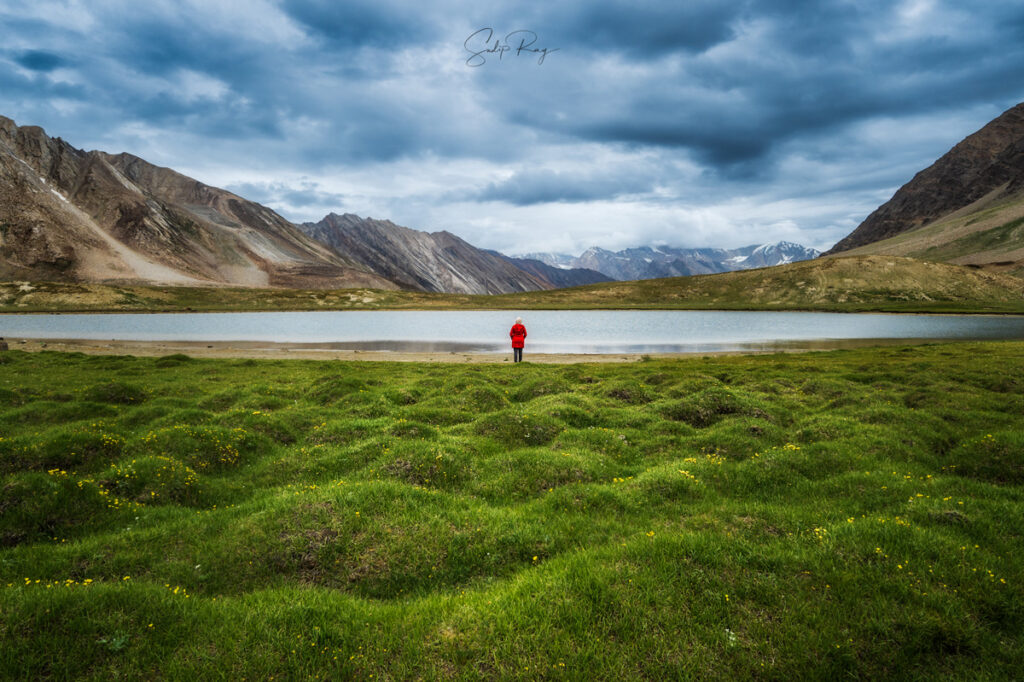
Table of Contents
Where is Zanskar Valley located:
Zanskar Valley is located in the Kargil district of the Indian Union Territory of Ladakh. The valley is predominated by the Zanskar range of the Greater Himalayas as also the Zanskar river.
About Zanskar Valley:
The word Zanskar or Zangskar bears testimony to the abundance of copper in the area since the Tibetan word for copper is ‘zangs’. Zanskar is translated variously to “white copper” (Zangs-dkar), “copper star” (Zangs-skar), “copper palace” (Zangs-mkar), and “copper valley” (Zan-skar).
Previously, Zanskar formed a part of the Tibetan Guge kingdom and continued as a peaceful Buddhist kingdom. Later, Ladakhi kings occupied this region.
The Zanskar Valley is a semi-arid region, perched at an average height of 13,000 ft. The road to Zanskar remains open only for 5 months in the summer. For the rest of the year, the valley remains cut off owing to heavy snowfall. The only medium of communication during this time is the frozen Zanskar river. For the Zanskari people, walking on the frozen river is their sole way to remain connected with the outer world. For travelers and trekkers, the icy river renders the renowned Chadar Trek.
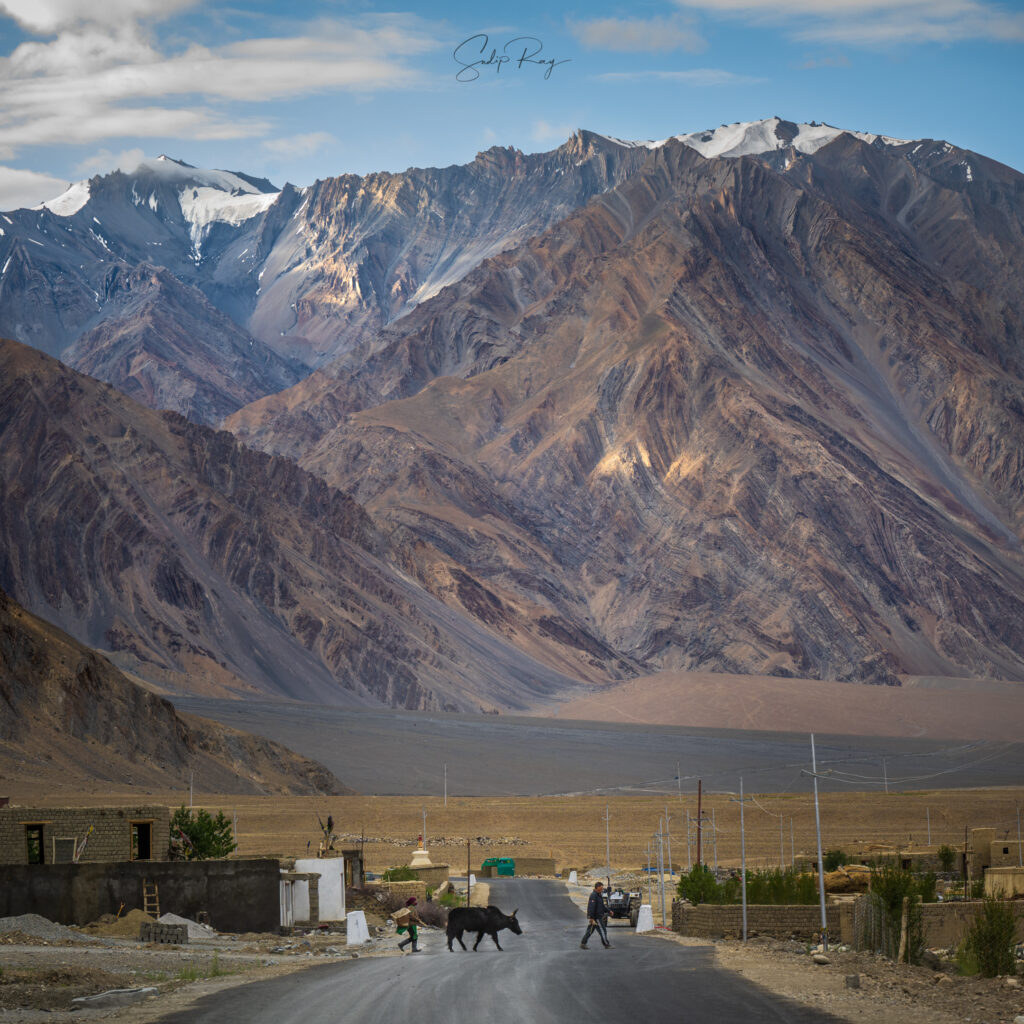
Why you need to visit Zanskar Valley:
Owing to its geographical location, Zanskar Valley has literally remained hidden from the outer world. It has successfully averted the onslaught of tourists and continued to remain an off-beat destination. This entails that, you will find the natural beauty of Zanskar to be pristine and unadulterated. The charm of its vista is just off the charts and can hardly be described in words. You need to see and experience Zanskar to believe in its ethereal allure.
The remoteness of Zanskar also means that it’s Tibetan Buddhism heritage and culture have retained their originality. Almost every destination in Zanskar has a ‘gompa’ or monastery that dates back ages. You will hardly come across such an experience anywhere else in India.
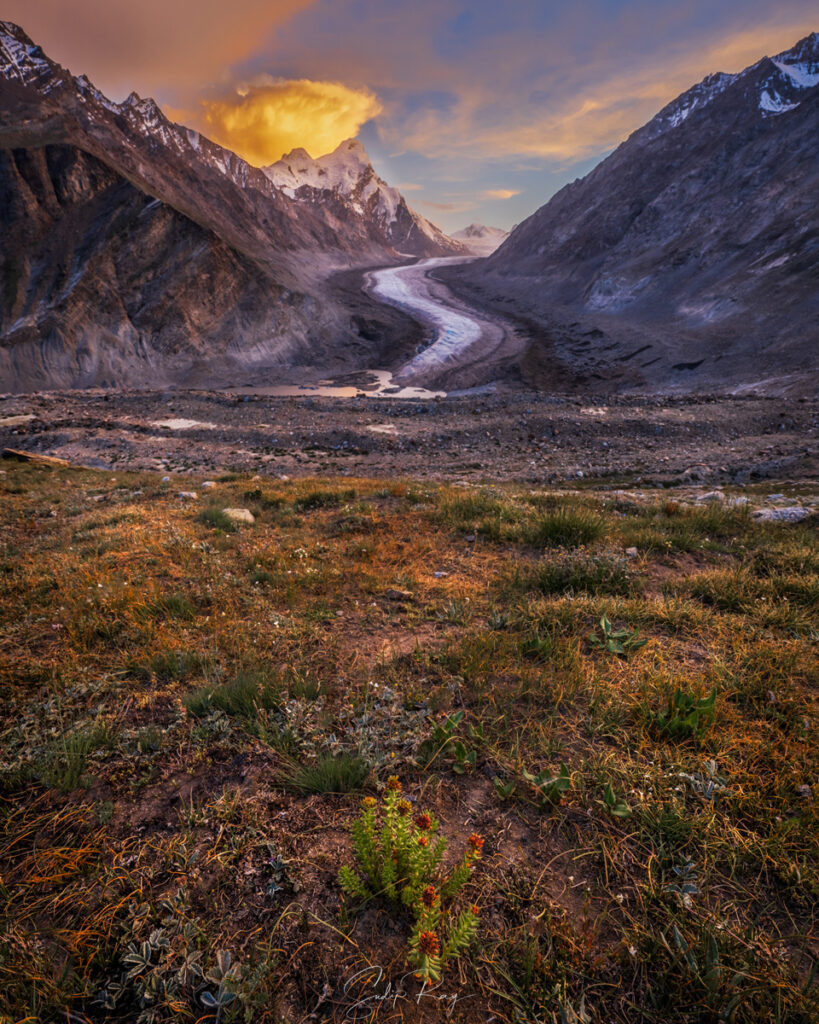
The Zanskar Valley will also quench your thirst for adventure and off-roading. The entire road connectivity across Kargil’s Suru Valley and Zanskar Valley is laden with adrenaline-pumping hairpin bends, river crossings, and whatnot. Also, Zanskar is known for several trek routes. Apart from the famous Chadar Trek, there is the Phugtal Monastery trek, Padum – Darcha trek, Padum – Gumbok Rangan Trek, Zanskar – Sham Valley trek, and Lugnak Trail trek.
Furthermore, if you are into camping, Zanskar offers amazing camping sites at Pensi La, Gumbok Rangan, Zangla, and Lingshed.
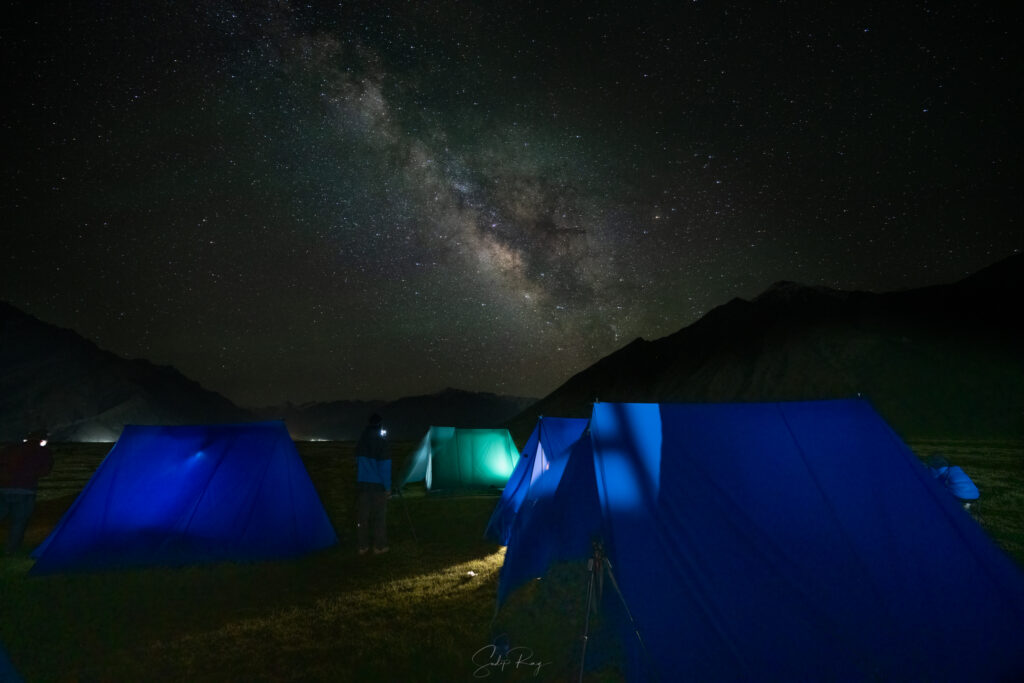
How to reach Zanskar Valley:
- By air: The nearest airport is Kushok Bakula Rimpochee airport of Leh, which is well-connected with Delhi and Mumbai.
- By rail: Jammu Tawi is the nearest rail station, which is around 700 km from Leh.
From Leh, there are two roads connecting Zanskar Valley. The first is Kargil – Padum Road via Suru Valley and Pensi La. The road goes through Sankoo, Damsna, Panikhar, Parkachik, Rangdum, and Pensi La and ending at Padum.
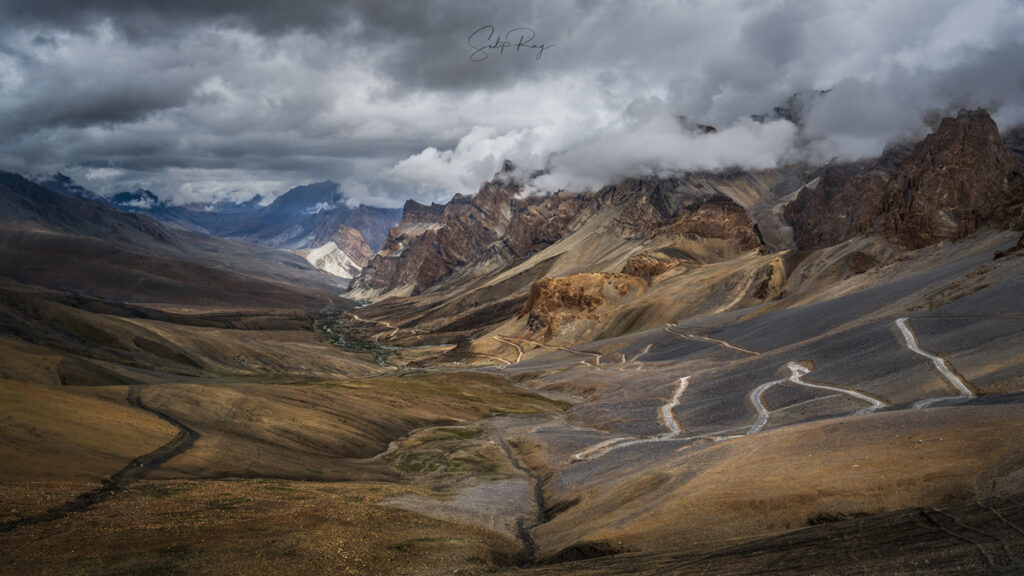
The second road runs from Leh to Padum via Sir Sir La and Shinge La. It will take you through Leh, Khaltse, Wanla, Sir Sir La, Photoksar, Shinge La, Lingshed, Zangla, and ending at Padum.
The road conditions in Zanskar are mostly hellish. The pitched road is scarce in both the aforesaid routes. You need to travel on thin dirt roads which remain strewn with pebbles and rocks, pass lanky bridges, and cross swift streams of rivers. However, the backbreaking journey will be duly compensated with the unparalleled natural vistas of Zanskar Valley.
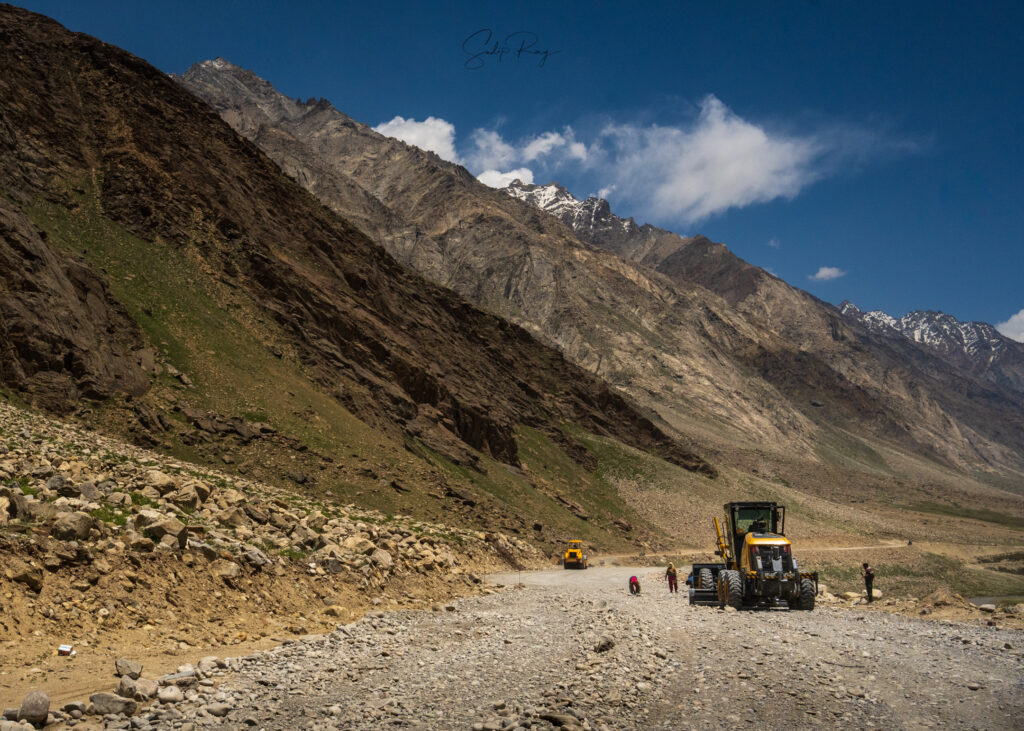
Distance charts of important places:
- Leh to Kargil – 216 km
- Kargil to Sankoo – 40 km
- Sankoo to Damsna – 20 km
- Damsna to Panikhar – 4.5 km
- Panikhar to Parkachik – 16 km
- Parkachik to Rangdum – 46 km
- Rangdum to Pensi La – 26 km
- Pensi La to Padum – 78 km
- Padum to Zangla – 32 km
- Zangla to Lingshed – 32 km
- Padum to Kargil –230 km
- Padum to Leh – 440 km
Weather in Zanskar Valley:
The Zanskar Valley remains covered under snow during the winter months. As mentioned earlier, it becomes inaccessible in the winter. Winter generally sets off here from the end of October. The temperature drops way below the Freezing Point and the average temperature remains at -10 degree Celsius. Heavy snowfall, coupled with a biting wind, starts in December and continues till the end of March.
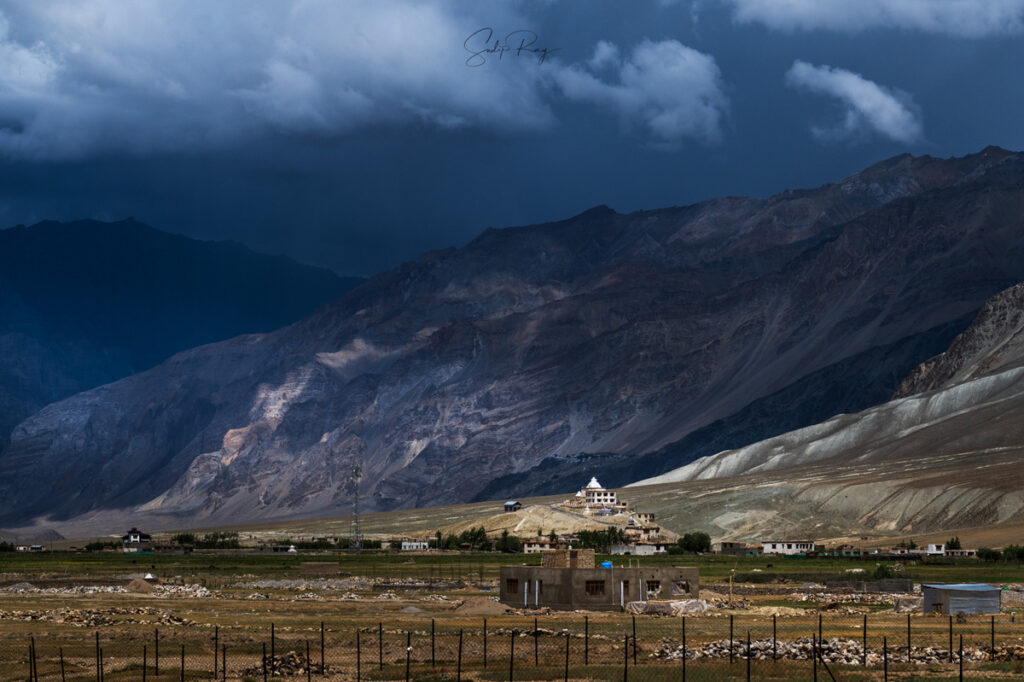
The snow starts melting in April. Roads start to get cleared from the end of April. Summer arrives by mid-May and continues till September. The days become pleasant with bright, sunny mornings, while the temperature drops significantly once the sun sets. The temperature during the day hovers around 15 degrees Celsius, while it falls to 3 – 5 degrees Celsius at the night. Though Zanskar is a cold desert area, light rains do occur rarely during June – July.
Best time to visit Zanskar Valley:
The summer months (June to September) are ideal for visiting Zanskar. The roads are all cleared and the temperature remains pleasant for exploring this beautiful valley.
However, if you are willing to go on the Chadar Trek, you must visit Zanskar from January – February.
We visited in the first week of July and found the weather to be perfect, sans one or two incidents of stray rainfall.

What to pack for a trip to Zanskar:
- During the summer months, the trick is to dress up in layers in Zanskar Valley. The temperature remains quite low during sunrise. Temperature increases gradually as the day progresses. Hence, try wearing layers of comfortable clothes, woolens, and jackets so that you can peel off one after the other as per the need.
- The summer mornings in Zanskar are quite sunny and warm. Thus, pack your regular cotton clothes, light sweaters, or jackets for the mornings. However, it starts to get chilly in the evening, while the nights are downright freezing. So, if you are planning to venture out after sunset for astrophotography, you will need thermals, heavy jackets, hand gloves, a balaclava, a muffler, and woolen socks.
- We found windcheater jackets handy during our Zanskar Valley trip. They provide protection both from cold wind and sudden rainfall.
- Winter is altogether a different story in Zanskar Valley. You will need to pack heavy woolen, puffer jackets, thermal inner-wears, woolen caps, mufflers, hand gloves, and socks.
- Apart from clothing, you must carry a good sunscreen lotion (at least with SPF 50), sunglass, and hats/caps. The sun is quite harsh and scorching in the high altitudes.
- Also, as Zanskar is a cold and dry region, carry a good moisturizer, Vaseline, Boroline, and if possible, coconut oil. These will protect you from getting dry skin, chapped lips, or cracked heels.
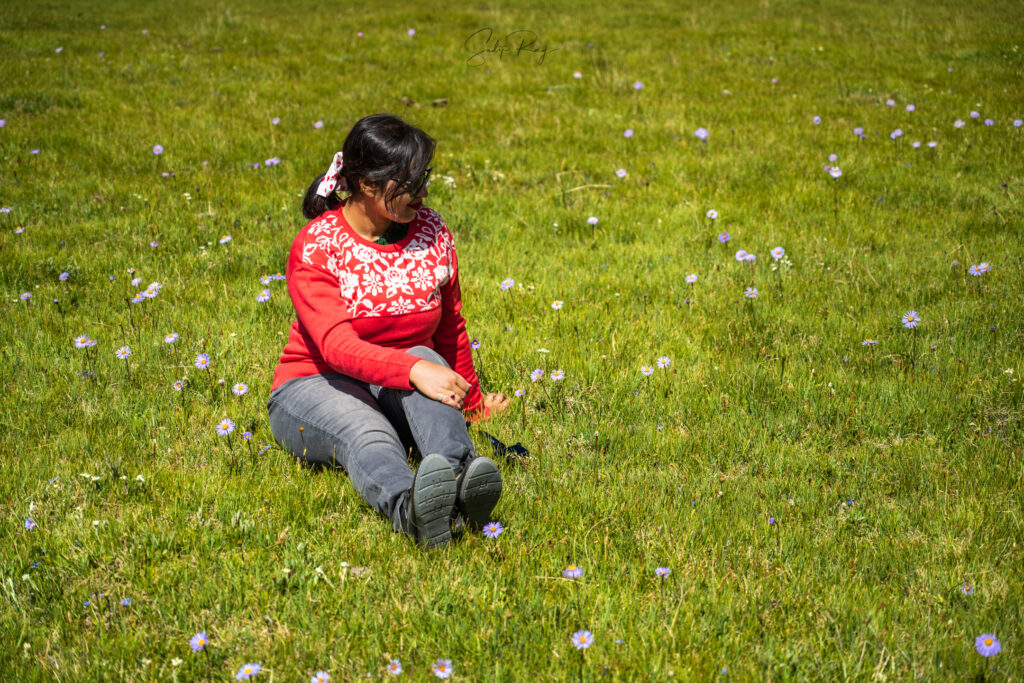
What to do and see in Zanskar:
The Zanskar Valley has something for everyone. Those with a penchant for nature will find Zanskar’s bounties abounding. For history and heritage buffs, there are countless monasteries and remnants of forts all across Zanskar. Wildlife enthusiasts may spot various birds and a few animals here. Zanskar also provides ample opportunity for photography, especially astrophotography. If you have been longing for that perfect shot of the Milky Way, Zanskar should be your one-stop destination.
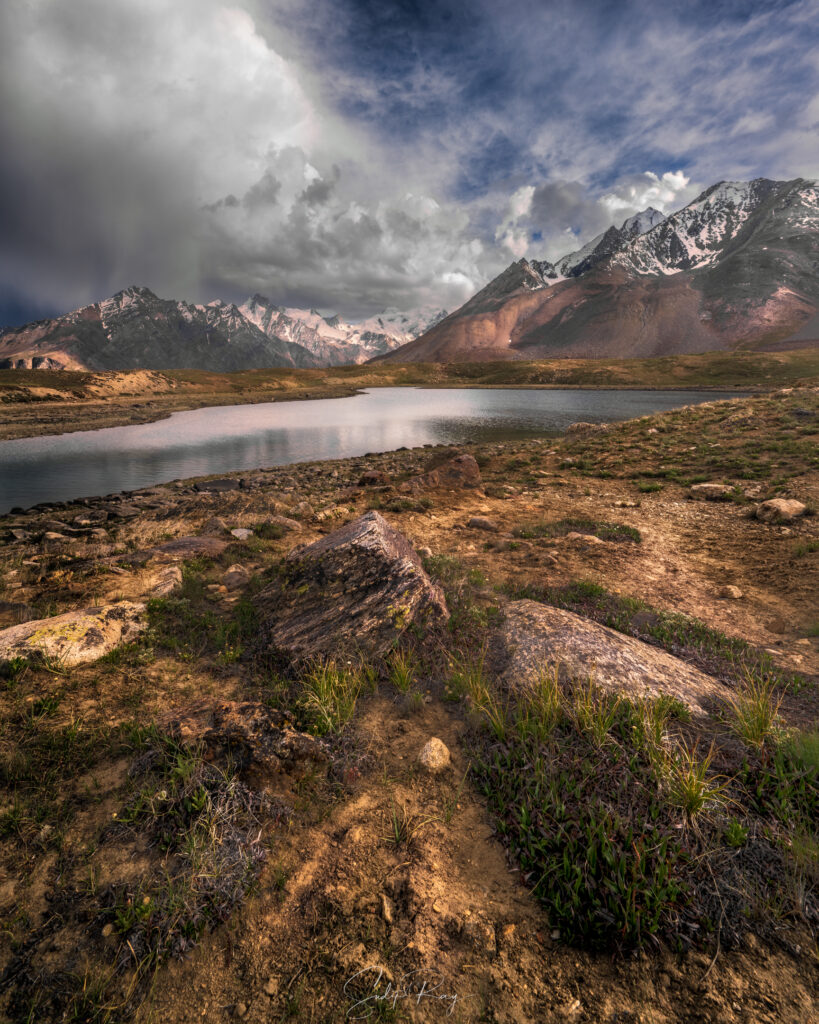
You can visit the following places:
1. Natural wonders of Zanskar such as Shafat Glacier, Parkachik Glacier, Drang Drung Glacier, Nun-Kun peaks, Ta Tso and Lang Tso twin lakes, and Gumbok Rangan.
2. Mountain passes like Parkachik La, Pensi La, Shingey La, and Sir Sir La.
3. Monasteries like Phugtal Monastery, Padum Monastery, Sani Monastery, Karsha Monastery, Stongdey Monastery, Pibiting Monastery, Dzongkhul Monastery, and Rangdum Gompa.
4. Ruins of fortresses at Rangdum and Zangla.
5. Look out for wildlife such as Himalayan Marmots, Kiangs, Asiatic Abex, Blue Sheep, Chukar Partridge, Himalayan Golden Eagle, and so on.
6. Zanskar is perfect for camping. You can set up camps at the twin lakes, Pensi La, Gumbok Rangan, and Zangla.
7. Zanskar is also ideal for stargazing if you are an astrophile.
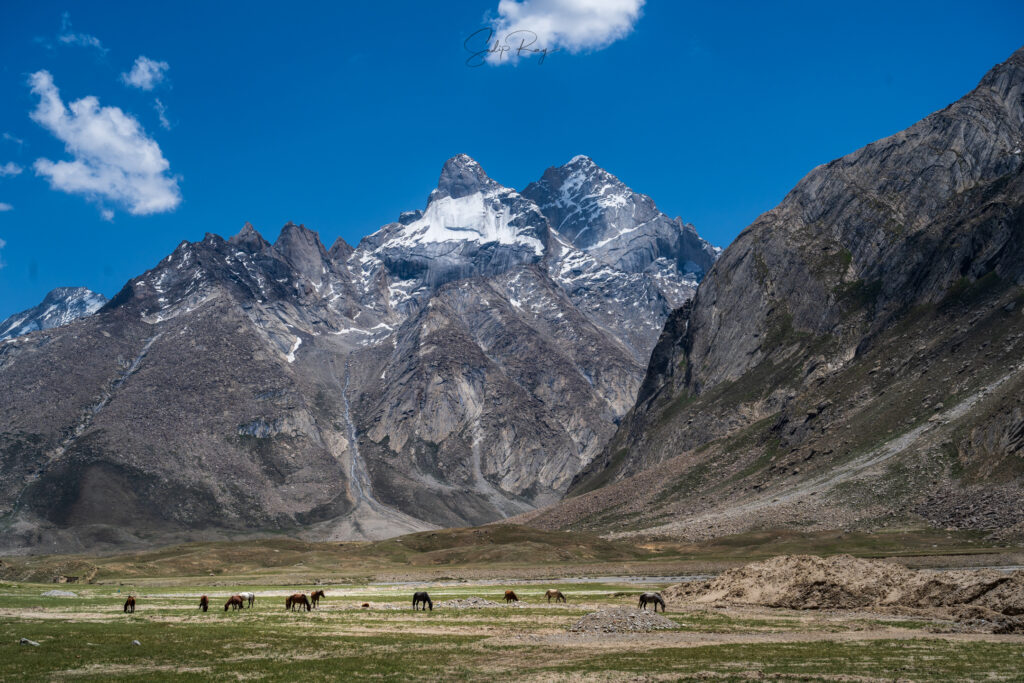
Where to stay in Zanskar:
There are small hotels, guesthouses, and homestays in almost every town and village of Zanskar. However, owing to the remoteness of Zanskar Valley, the amenities available are basic. Room rates are comparatively cheaper than the other areas of Ladakh. Electricity is erratic and, in most places, you won’t get running hot water. Also, toilets are mostly dry composting types.
- Hotels – You will find hotels (even three-star ones) at Kargil and Padum. Some of the well-known hotels of Padum are Omasila Hotel, Mont Blanc Guesthouse, Hotel Rigyal, and Padum Guesthouse. We stayed in Omasila Hotel and found it quite good.
- Guesthouses – Guesthouses are available in Sankoo such as Goba Guesthouse and at Rangdum such as La Himalaya Guesthouse, Nun-Kun Guesthouse, and Himalayan Inn.
- Homestays – You will come across homestays at almost every village in Zanskar such as in Anmo, Cha, Purne, Kargyak, Karsha, Zangla, and Lingshed. Homestays are also available in villages of Suru Valley such as Damsna, Parkachik, and Rangdum.
- J&K Tourism Bunglow – There are J&K Tourism Bunglow at Sankoo, Panikhar, Parkachik, Rangdum and Padum. But we heard that they are not very reliable and remain mostly closed.
- Monasteries – Another great option is renting a room at a monastery. Karsha and Phuktal Monasteries rent rooms to visitors.
- Campsites – You can also set up camps at Damsna, Rangdum, twin lakes, Gombok Rangan and Zangla.
What to eat at Zanskar:
While on road, you will find small stalls at Parkachik, Rangdum, Purne, and Photoksar serving hot teas and coffees, instant noodles, and boiled eggs. You will find restaurants at Padum serving Tibetan delicacies such as Momo, Thukpa, Tingmo, Thenthuk, and butter tea. Kargil also has a few cafes and restaurants where you will get regular ‘dal-chawal’ to Chowmein and Momos.
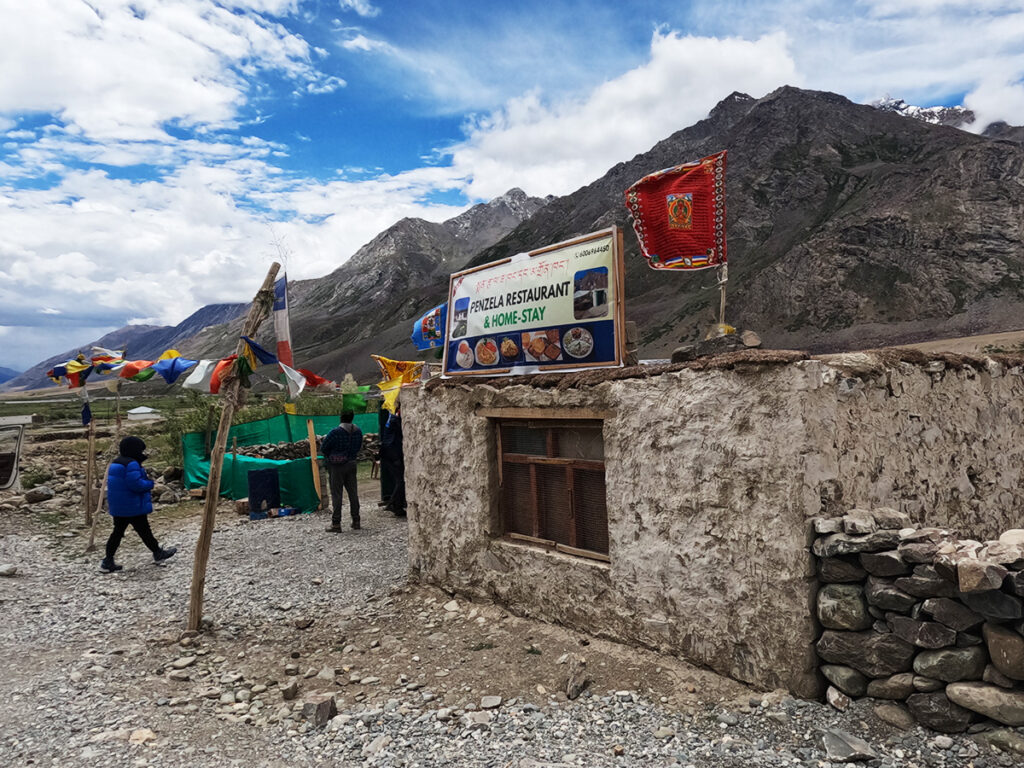
How to travel around Zanskar:
As they say, it’s not the destination but the journey. This seems apt, particularly for Zanskar Valley. The drive across the dirt roads, muddy trails, and river crossing is an adventure in itself.
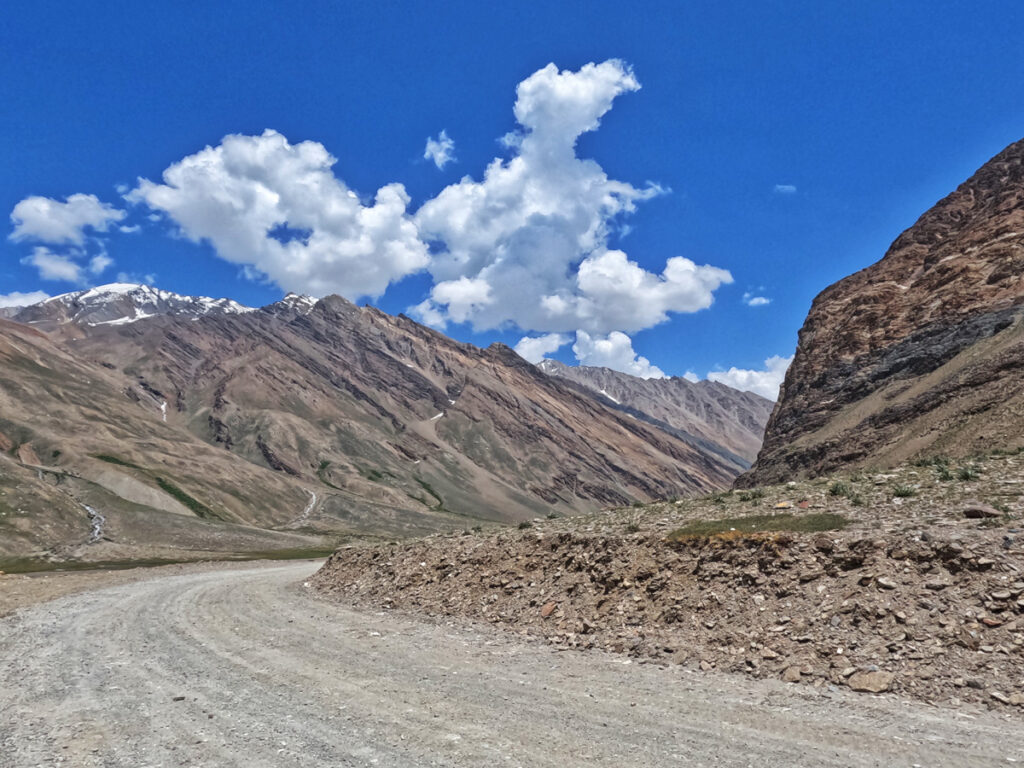
Public transport: Bus service is available in Zanskar. But buses are not that frequent and their reliability cannot be vouched for. A bus runs from Leh to Padum via Kargil once a week. However, getting a seat on this bus will be nearly impossible as only a sole bus runs once a week on this route.
Daily bus service is available from Kargil to Sankoo, Panikhar, and Parkachik.
The other mode of public transport is shared taxis. This is far more reliable than the buses and the local people also seemed to prefer this. You will get shared taxis from Leh to Kargil, Kargil to Padum, and vice versa. A shared taxi from Kargil to Padum will cost INR 1,500 approximately. Further, shared taxis from Kargil to the villages of Sankoo, Panikhar, Parkachik, and Rangdum are also available. We suggest enquiring about the timings and fares beforehand and booking seats, if possible.
Hired taxis: Hiring a cab for traveling in Zanskar Valley is perhaps the best option. Although given the bad road condition, it will cost a hefty. Remember a taxi rented in Leh or Srinagar cannot be used for traveling or sightseeing in Kargil and Zanskar. Similarly, a car rented from Kargil can’t be used for sightseeing in Leh or Srinagar.
Hire an SUV car with good ground clearance. We traveled in Xylos and faced no problems while crossing streams or driving on rocky terrains.
Hiring an SUV for 9-10 days in Zanskar will cost you around INR 50,000.
For hiring an SUV, you can contact Norbu Pibitang (9469369109/7889857547).
Private cars: If you have an SUV with good ground clearance, you can definitely self-drive in Zanskar. It will give you flexibility with your itinerary and also save you money. However, since Zanskar is a remote area and the roads are in bad shape, take all precautions regarding your vehicle and drive with utmost care.
Bikes: Ladakh and biking have now become synonymous. If you are an avid biker, you can definitely hire one or drive your own bike to Zanskar.
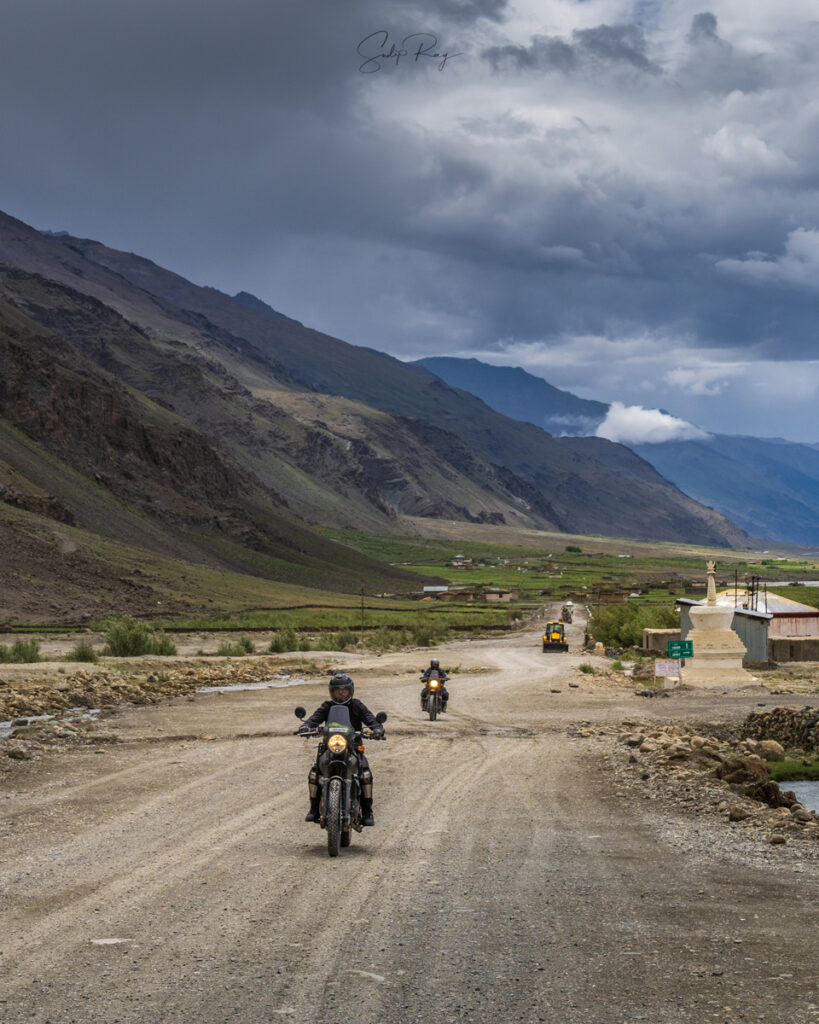
Acclimatization and AMS while traveling in Zanskar:
Zanskar Valley is situated at an average height ranging from 13,000 to 18,000 ft. As such, acclimatization is crucial here.
-If you are flying in Leh, take complete rest for one day and give your body ample scope to adjust to the sudden height gain. Leh’s altitude is 11,562 feet.
-While traveling from Leh to Padum, plan for at least 2-night halts on the way. The journey from Leh to Padum involves both driving through lower altitudes and sudden height gains. As for us, we halted at Damsna, Rangdum, and Pensi La before reaching Padum on our 4th day.
-The general rule for tackling Acute Mountain Sickness (AMS) is to stop for a day every 2,000 feet and climb above 8,000 feet.
-Don’t overexert yourself. Keep your body relaxed and walk slowly.
-Keep yourself hydrated by drinking ample amounts of water.
-Eat carbohydrate-rich food. Opt for foods that are easy on the stomach and avoid fatty and junk foods. Please keep in mind that, our digestion system slows down as we gain height.
-Don’t starve yourself. Also, don’t overeat.
-While traveling, it’s wise to carry dry fruits like dates, apricots, raisins, almonds, and walnuts. You can also carry biscuits and chocolates. You won’t find food joints everywhere in Zanskar. These foods will help you in such situations.
-You can also carry ginger, garlic, and cloves. They are helpful in battling nausea, dizziness, and vomiting at high altitudes.
-Strictly avoid smoking and drinking alcohol at high altitudes.
-Also, avoid sleeping at odd hours.
-Refrain from turning the car heater on.
-Acetazolamide or Diamox is often used as a precautionary measure against AMS. However, we advise consulting a doctor before starting Diamox.
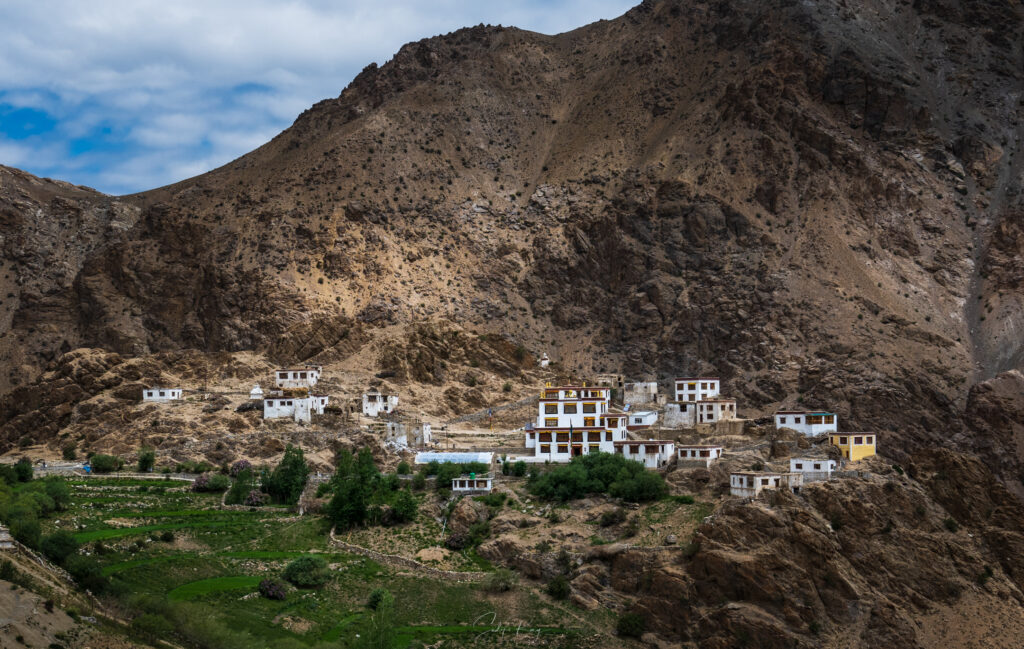
Hospitals and medical assistance:
Zanskar is one of the remotest places in India. It is also underdeveloped compared to the Leh district of Ladakh. As such, healthcare facilities are not readily available in Zanskar.
Padum is the only place in Zanskar Valley where you will find a hospital. There are also a few medicine shops here.
There is also another hospital with better equipment at Kargil.
We, therefore, suggest carrying basic medicines for fever, common cold, indigestion, dysentery/diarrhea, stomach ache, and headache along with painkillers, antiseptics, and bandages.
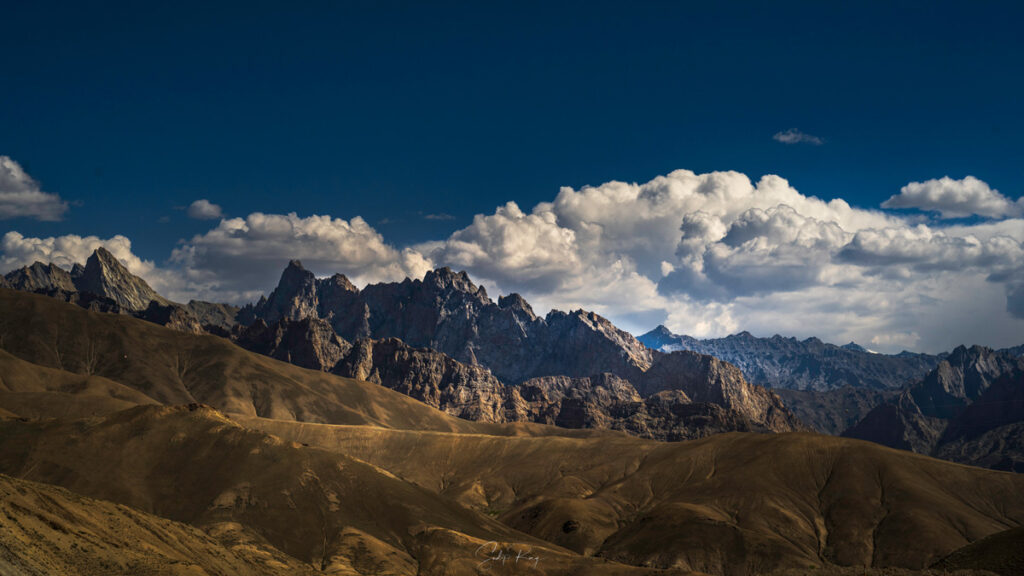
Mobile connectivity in Zanskar:
No pre-paid mobile connections work in the entire Ladakh. Only post-paid connections of BSNL, Airtel, and Jio work in Ladakh.
However, in Zanskar, only Jio’s post-paid remains active. We found mobile towers in almost every small village of Zanskar. Mobile connectivity is however absent in remote spots, such as Gumbok Rangan.
Availability of ATMs:
You will come across ATMs at Kargil, Sankoo, and Padum. However, there is no guarantee of the availability of cash 24X7 in these areas. Hence, it is better to carry sufficient cash with you while traveling across Zanskar.
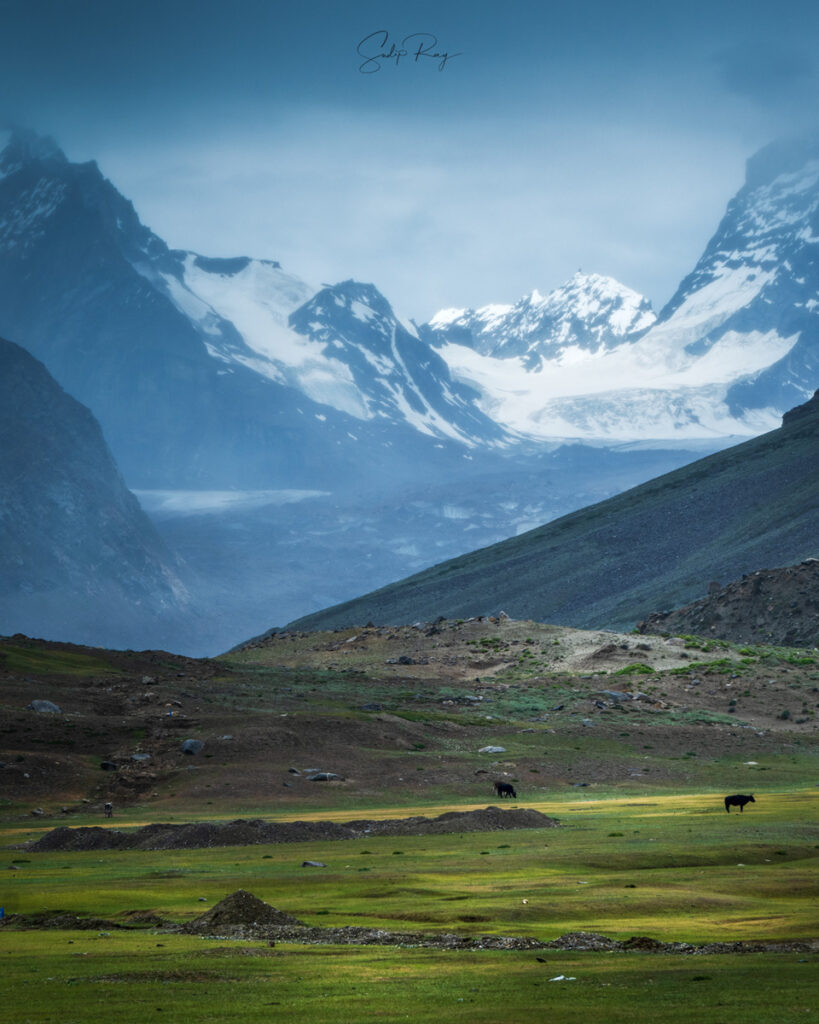
Petrol Pumps in Zanskar:
After Leh, you will find petrol pumps only at Kargil and Padum. However, the activity of Padum’s petrol pump is doubtful. We found it closed twice within a span of 3 days. We suggest filling your car to the fullest at Kargil and carrying spare fuel in a jerrycan in case of emergency.
Car mechanics:
We saw a number of car repair shops in Kargil. Padum has few mechanics also. If you are taking your own car or bike to Zanskar, we suggest getting your vehicle serviced beforehand. Also, carry basic spare parts and a toolkit in case you face minimal breakdowns on your journey.
Is it safe to visit Zanskar:
Zanskar Valley is absolutely safe for tourism. Yes, the roads are abysmal and you need to be vigilant while on road. However, local people are nice, friendly, and helpful. People in Zanskar will always greet you with a hearty smile and go out all the way to help you with their limited resources. We camped at various locations across Zanskar and faced no threats or problems at all.
Taking kids and elderly persons to Zanskar:
Though Zanskar is a piece of heaven on earth, we felt that it is not ideal for a family vacation with kids and elderly members of the family. Zanskar has high altitudes where the oxygen level is quite low. You need to be physically fit to tread the paths of Zanskar. Also, medical facilities are scarce here as well as other day-to-day amenities.
